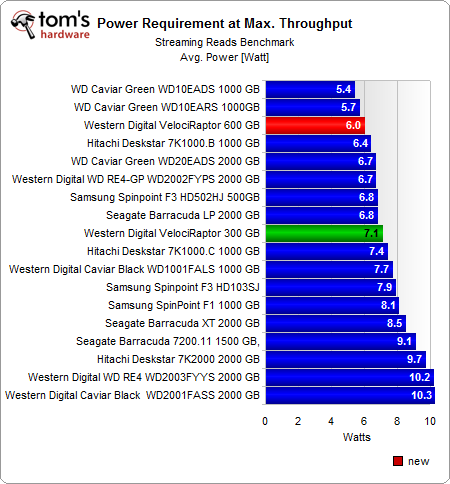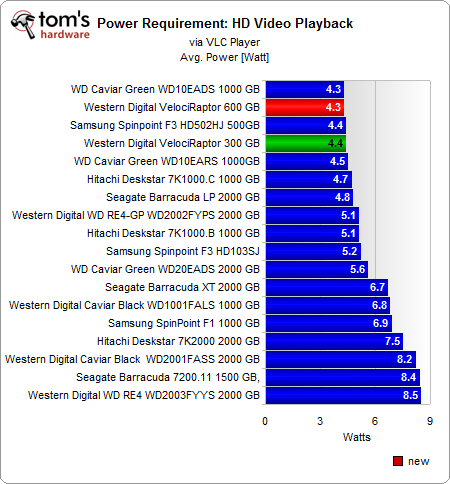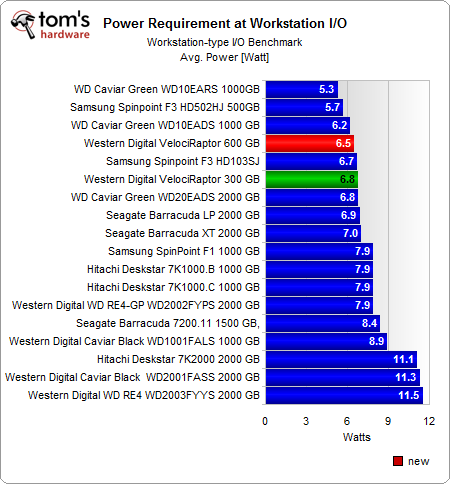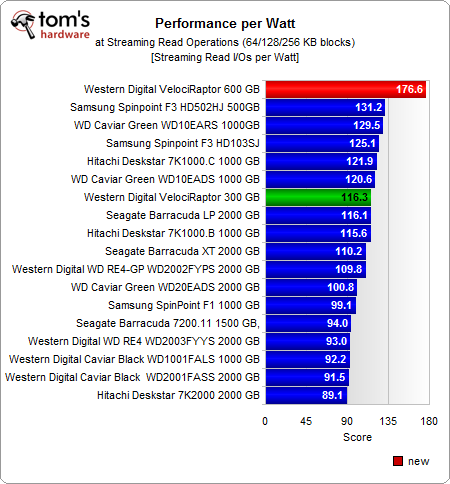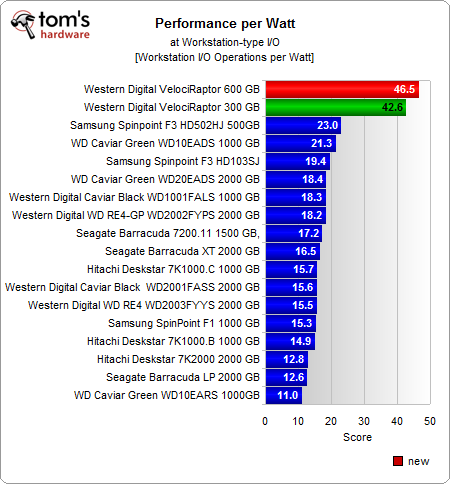VelociRaptor Returns: 6Gb/s, 600GB, And 10,000 RPM
Benchmark Results: Power Consumption And Efficiency
Power consumption at idle is very low. The 4.1W we measured only gets beaten by 3.5” hard drives specifically built for low power consumption. Most performance desktop hard drives require 5W or more.
At a peak throughput over 150 MB/s, the new VelociRaptor remains very low on power. 6.0W is close to our 5.4W all-time-low we’ve measured on a WD Caviar Green. But keep in mind that the WD10EADS delivers much lower throughput.
At full HD video playback the new VelociRaptor is best-in-class.
Despite the WD6000's high performance levels, we found that power consumption during workstation I/O remains comparatively low. Many 3.5” performance desktop hard drives require almost twice as much power.
Power Efficiency
WD's massive increase in streaming read performance per watt doesn't come as a surprise. The WD6000 is much faster than all the other drives and requires less power to operate. That's power efficiency surpremacy.
The WD6000's advantage grows even larger with workstation I/O. Since performance only increased a bit—the read/write heads can't be accelerated indefinitely—there's only a small increase in efficiency.
Get Tom's Hardware's best news and in-depth reviews, straight to your inbox.
Most modern flash SSDs deliver much better power efficiency in both throughput and I/O, typically reaching more than 200 MB/s at one-third of the VelociRaptor's power consumption. The efficiency results are even more in favor of some SSDs when it comes to high I/O activity, where SSDs can outperform hard drives by up to 20x depending on the workload. However, SSDs in the capacity range of WD's latest VelociRaptor are essentially unaffordable, so weigh the overall value.
Current page: Benchmark Results: Power Consumption And Efficiency
Prev Page Benchmark Results: PCMark Vantage Application Performance Next Page Benchmark Results: Noise And Temperature
